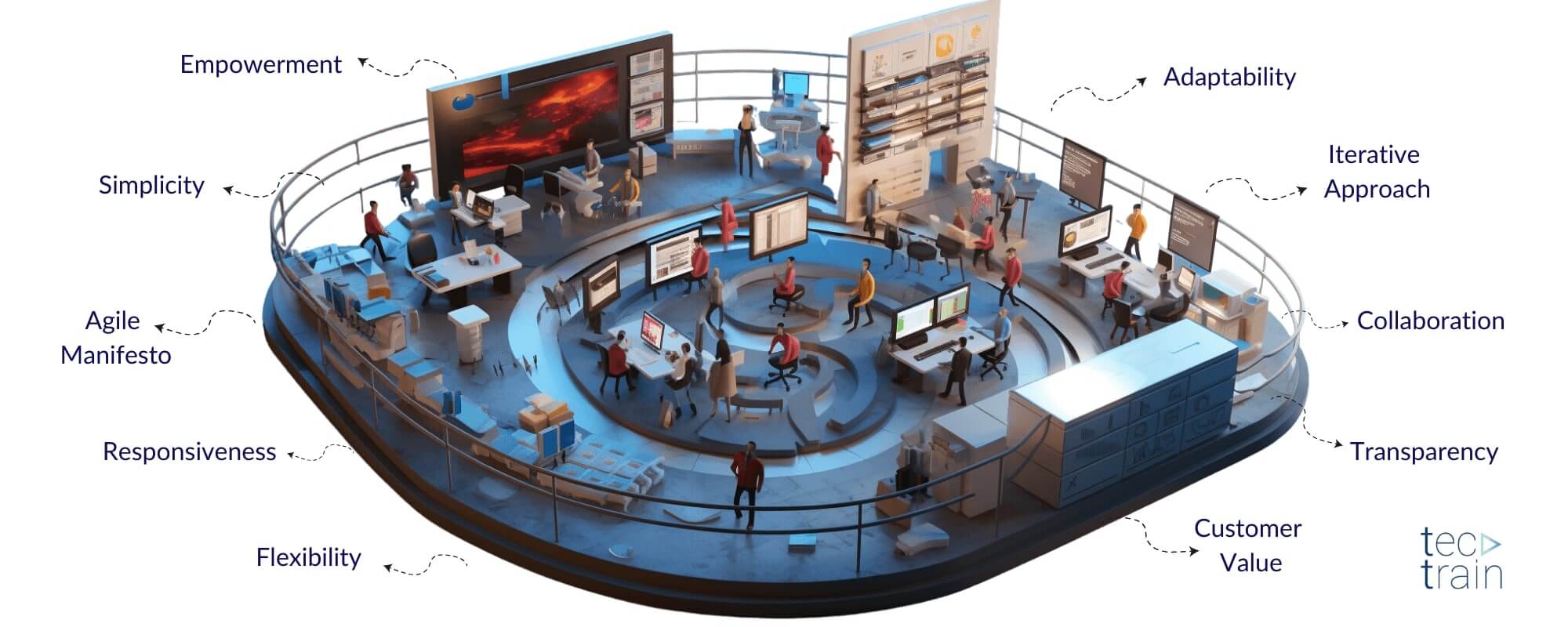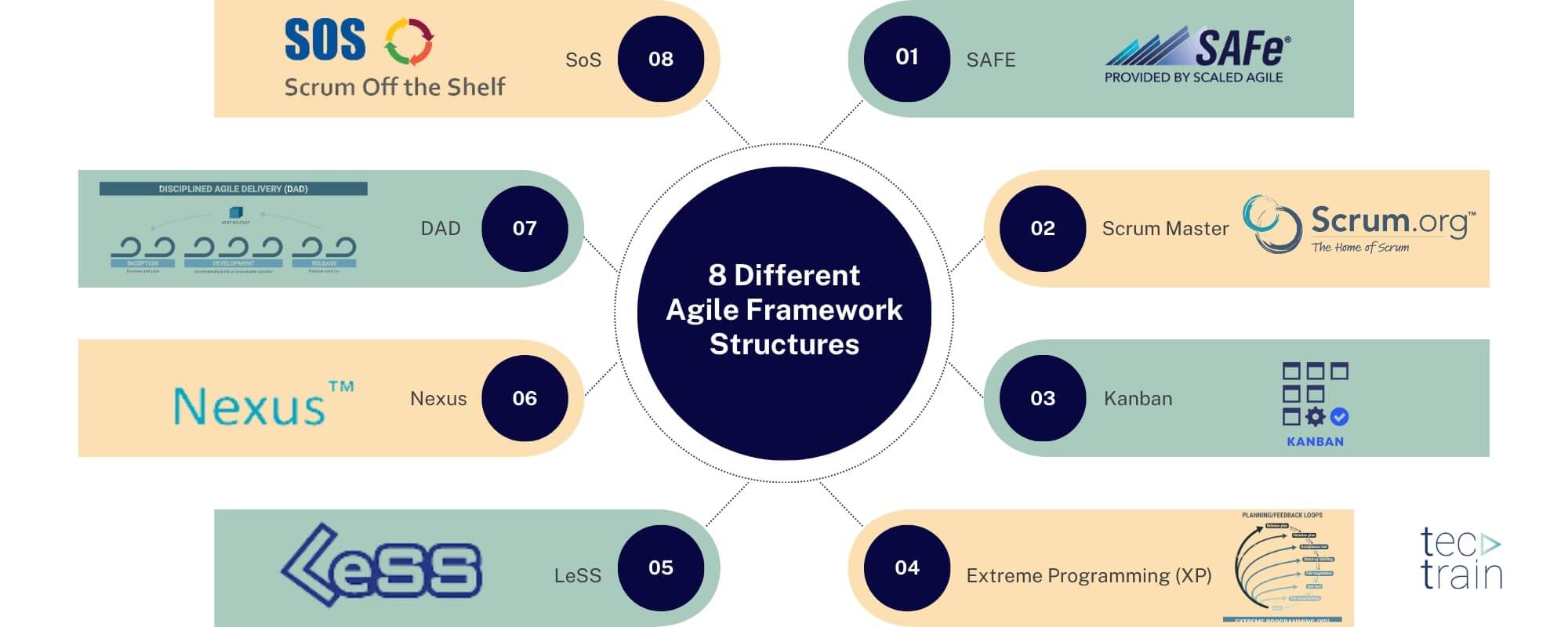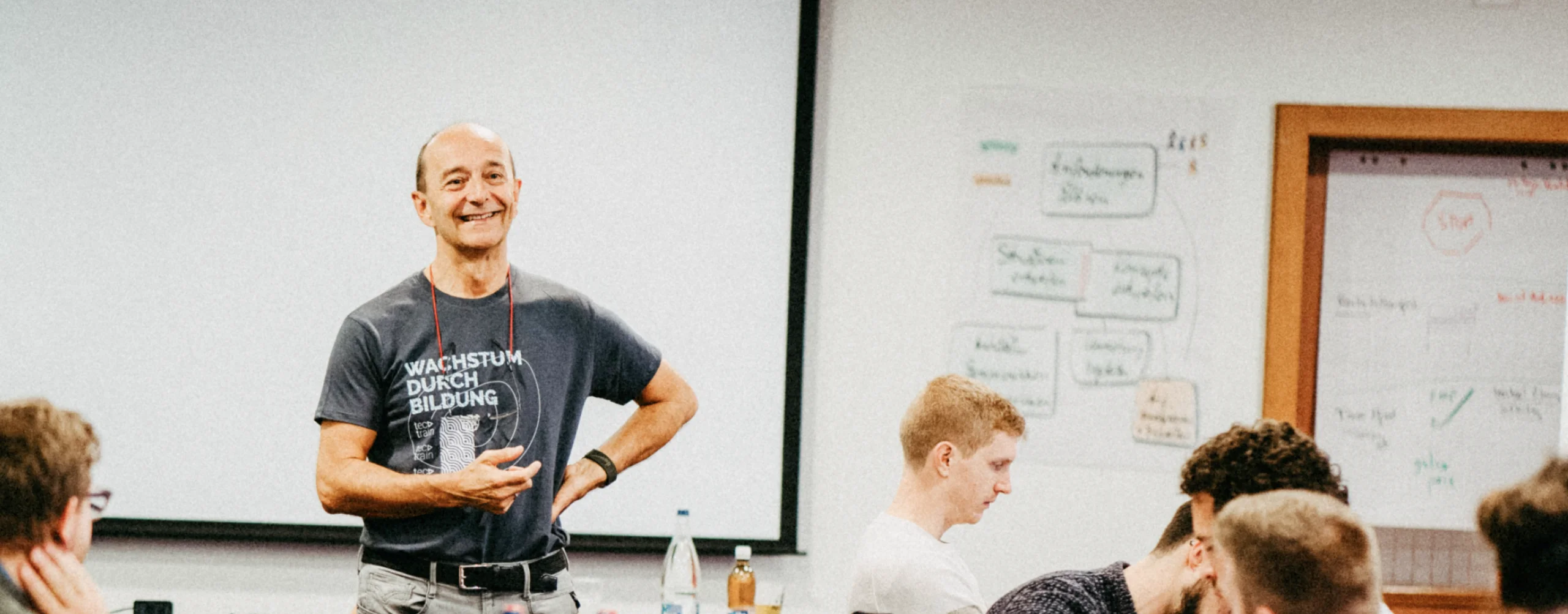What is the agile way of working
The complex environment created by constant change and uncertainty about the future is evident in the business world as well as in all areas of life. Therefore, many companies are beginning to adopt new working models to keep up with this ever-changing environment and of course to maintain their success.
Adapting to constant change, confronting uncertainties with different and experimental approaches, and responding to complex problems with simple solutions have become the most important factors that ensure the success of companies. In such an environment, the method of agile working stands out with its revolutionary structure that changes the usual work patterns, to cope with uncertain and turbulent work environments and ultimately with its ability to create change, to react to it, and above all to continue to be successful in your industry.

What does agile working mean?
Agile Working Definition: Agile working is about bringing people, processes, connectivity and technology, time, and place together to find the most appropriate and effective way of working to accomplish a specific task. Agile is defined as an iterative approach to project management and software development that helps teams deliver value to their customers faster, more accurately, and with less work. Rather than deciding and completing everything about the project at once, an agile team builds and delivers the task step-by-step. All plans, requirements, and results of the business plan are continuously evaluated. As such, teams have a natural rhythm to react quickly to changes.
Working Agile officially entered our lives in 2001 when 17 technology professionals prepared the Agile Manifesto. The authors of the Agile Manifesto have identified four key principles for agile project management aimed at guiding teams in developing better software:
● Instead of processes and tools, individuals and interactions
● Working software instead of detailed documentation,
● Customer cooperation instead of contract negotiations,
● They argued that responding to change should be a priority rather than sticking to a plan.
The reason all these ideas chose the word agility as their label was that the word stands for quick adaptation and reaction to change, which is very important to their approach.
Featured resource:
Agile Manifesto: 4 Core Values & 12 Principles
Understand the agile working definition
Defining agile working is more than just putting words on paper; it's about adopting a specific mindset and approach. This framework is guided by the Agile Manifesto's core values and principles, offering a roadmap for navigating change and uncertainty.
Completing this guide is something the whole team can experience together. There is no one-size-fits-all here. Because experimentation is the basis of agile working. Knowledge is defined by the experience gained as a result of the choices made. When the team faces uncertainty, they make quick decisions, try something new that they think will work, get feedback, and make new adjustments accordingly. All agile values and principles must be kept in mind.

One can speak of many different framework structures in which agile work logic can be used. SAFe, Scrum Master Kanban, Extreme Programming (XP), LeSS, Nexus, SoS, or DAD are some of these Agile Frameworks. So when it comes to what framework a company that has decided to work in Agile should work with, it is important to recognize which of these frameworks creates a strong team and ongoing values with a customer focus.
Featured resource:
Top Agile Frameworks in Software Engineering for 2024
Agile vs Scrum: Comparison of Project Management Methods
What are the requirements for agile working?
Of course, the decision to work agile cannot be made overnight. Rather, the promotion of agile teams is a process that begins with the basic attitude. Developing a new perspective is the motto. The entire organization with all its characteristics must be taken into account.
When employees enjoy the luxury of making mistakes and seeing mistakes as turning points for progress, they are encouraged to break new ground, make safer decisions, and allow for different ways of thinking. Trust is one of the most important prerequisites for agile working. In order for the entire structure to have relevant information, regular communication is necessary. The requirement for agile working can look like this:
- A clear and common goal: A clear vision that takes into account the company culture and forms the basis for the decision-making process should serve as a basic rule. Working agile requires a clear and shared vision of what the organization is trying to achieve. This vision should be communicated to all team members and used as a guide for decision-making and work prioritization.
- A collaborative and cross-functional team: Working agile requires teams organized around a set of cross-functional roles and responsibilities. This means that the team must be made up of people with different skills and expertise, and that team members must be able to work together effectively.
- Roles and responsibilities: Employees and the various teams must be able to act and make decisions independently with team spirit in order to avoid lengthy, counterproductive decision-making processes.
- Open and transparent communication: Agile working requires open and transparent communication between team members and stakeholders. This ensures that everyone knows what is going on so there are no misunderstandings.
- Flexible and adaptable processes: Agile working requires flexible and adaptable processes that can be easily changed if necessary. This means that the team must be able to react quickly to changes in the market or customer needs. An open and continuous exchange should be encouraged about weak points, optimization possibilities, and questioning of the procedure.
- Regular feedback and retrospectives: Agile working requires regular feedback and retrospective reviews in which the team reflects on its work and identifies potential for improvement. This ensures that the team is constantly evolving and achieving its goals. Tasks should be planned in shorter steps and larger projects should be divided into several phases.
- A culture of continuous improvement: Working agile requires a culture of continuous improvement, where teams are encouraged to experiment, learn from mistakes, and continuously improve their processes and workflows.
These are the basic requirements for agile transformation, but it is important to note that agile working is not a one-size-fits-all solution and may require multiple adjustments to meet the organization's specific needs and culture. Working agile can be challenging for a traditional organization and it is important to have a clear plan and management support to implement it successfully.
Featured resource:
Implementing Agility in the Enterprise: Your Practical Handbook
What are the challenges to be considered when working agile?
The agile way of working essentially transforms the entire organizational culture, requiring employees to take on responsibility and managers to delegate it. This setup inherently has the potential for conflict. Hence, it's crucial that this mindset becomes ingrained in the company culture.
If the organizational values don't include trust and transparency, implementing an agile way of working as a sustainable strategy for boosting employee productivity becomes challenging.
What are the benefits of Agile Working?
After the Agile Manifesto spread and awareness of the Agile mindset increased, companies began to embrace Agile. Some of the reasons behind this trend are to increase target quality, respond faster to changes, reduce delivery times, release new types of products more frequently, and reduce costs. Agile working also means that employees are more capable of acting, more innovative, and more productive.
In short, agile working comes with higher job satisfaction, better opportunities for talent advancement, and better work-life balance for your team. The employees are not only more motivated but agile work also leads to better customer satisfaction and ultimately to profitable success for the company.
Apart from these facts, agile working offers the following advantages:
- Ensures sustainability: One of the key themes of the agile methodology is that a company must be sustainable. Programmers and users working with the agile method are constantly working to help the projects managed with this method to be sustainable.
- It brings transparency: In the agile method, the work that is usually done is presented to the customer within a certain time frame. This helps the software team to work transparently while increasing customer satisfaction. In this process, the team clearly presents all of its work with the aim of ensuring and increasing customer satisfaction.
- Facilitates Collaboration: Collaboration is one of the most important issues for everyone when it comes to doing business. Because cooperation in project management brings success. For this reason, employers and the software team pay attention to cooperation in projects that work with the agile method. Collaboration strengthens both communication within the team and the efficiency you get from the project. Therefore, they can use the agile method to facilitate collaboration in a project they will be working on. In this way, a team can be formed that organizes, collaborates, and works more efficiently.
- Strengthens communication: Agile working prefers to exchange information with customers and teams in order to increase efficiency. Agile working strengthens the communication between the customer and the software team and gives both sides trust. In addition, it is strong in communication between teams in projects carried out with agile work. The stronger the communication in the team, the higher the efficiency.
- Brings professionalism: Professional results are guaranteed in every agile project. Thus, the developed projects are created to meet the needs of the customers and the efficiencies gained from the projects increase.
- Delivers more accurate results: Agile working is always possible to adapt to new conditions and expectations, thus achieving results that meet the needs of the day. Rigid structures have a clear disadvantage here.
- Offers more security: Agile working avoids problems caused by short-term changes. Teams work with the product owner to determine what goes into each sprint. That way, the team is in agreement on what needs to be delivered. Also, there are fewer surprises or unplanned features coming into the structure. This is how agile companies remain competitive.
- It is Faster: Through incremental iterations and the work product delivered as a result of the iteration, project progress is more healthily monitored and project risk is reduced. Errors are found earlier in the project, delivery accuracy is increased and the product is brought to market faster.
- Communication with the customer is uninterrupted: The degree of integration of business processes and software development processes increases since the customer can communicate with the project participants at eye level during the course of the project. The functional quality of the software and customer satisfaction increase by directly expressing the desired features without layers.
- Fast problem solving: Another advantage of agile working is that you are less sensitive to external influences. Since agile working requires constant iteration, the organization can react more easily to changes and thus better master external challenges.
Conclusion
In summary, agile working can be an effective approach to addressing challenges in today's fast-paced business world. By using agile methods, teams can react more quickly to changes, promote innovation, and respond flexibly to customer needs.
If you want to learn more about how agile working works in practice, you should visit our "Scaled Agile Framework" page. There you will find various SAFe courses, including our "Leading SAFe" course, which teaches you the basics of agility & SAFe and prepares you for the SAFe Agilist certification.
And if you want to expand your agile skills and knowledge, check out our "Academy" page. Here you will find a variety of training courses and certifications on various IT topics, including agile methods. We look forward to helping you achieve your career goals!






(2).png)


